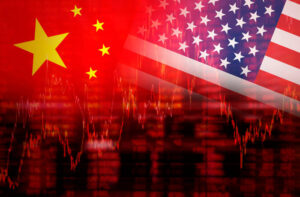Understanding Economic Policy Divergence: A Deep Dive into Recent Market Movements
As global markets prepare for pivotal discussions, key players are making strategic moves that could redefine economic landscapes. The People’s Bank of China (PBoC) took significant steps on May 7, cutting interest rates and lowering the Reserve Requirement Ratio (RRR) to inject vitality into China’s economy.
A Bold Financial Maneuver
The recent cuts in interest rates weren’t just surprising—it underscores the urgency the PBoC feels as it grapples with lacking growth indicators. According to East Asia Econ:
“China – the PBC won’t have finished yet. The exact timing of monetary easing can vary, but today’s interest rate and RRR cuts are not a surprise. Today’s moves are consistent with the PBC’s usual reaction function, and with inflation so weak, further loosening should be expected.”
The Trade War’s Ripple Effect
This monetary easing follows softer-than-expected Purchasing Managers’ Index (PMI) data for April, highlighting the trade war’s toll on China’s economic performance. Analyst Brian Tycangco from Stansberry Research outlined the situation:
“Beijing just did what we were all hoping and anticipating for… MORE STIMULUS via lower rates and RRR cuts to unleash a tidal wave of liquidity just as the economy starts to feel the impact of Trump’s trade war… Deal or no deal, Beijing has made steps to shore up its domestic economy.”
This simultaneous push for economic stability while engaging in trade discussions adds a layer of optimism in a volatile landscape.
A Contrast in the U.S. Markets
Meanwhile, the Federal Reserve opted for a wait-and-see approach, maintaining the interest rate at 4.5% as of May 7. Chair Jerome Powell conveyed a cautious outlook amidst rising stagflation concerns. This inaction could irk President Trump, especially as trade negotiations loom large.
Peter Schiff, Chief Economist at Europac, summarized the Fed’s delicate position:
“Reading between the lines here’s what Powell said. We’re in a lot of trouble. The economy is weak and getting weaker… without creating a financial crisis.”
The difference in approaches highlights an intriguing economic divergence—China’s aggressive stimulus versus the Fed’s measured stance.
Market Reactions: A Tale of Two Regions
As news of PBoC’s stimulus spread, markets reacted positively. On May 8, Hong Kong and mainland Chinese equities saw gains thanks to renewed optimism surrounding trade talks. The Hang Seng Index rose 0.72%, while the CSI 300 and the Shanghai Composite Index increased by 0.61% and 0.80%, respectively.
Yet, it’s noteworthy that even with these gains, year-to-date performances still lag, with the CSI 300 and Shanghai Composite down 2.62% and 0.27%. In contrast, the Nasdaq Composite’s slight increase of 0.27% is overshadowed by an 8.14% year-to-date dip, revealing a contrasting narrative.
Takeaway: What Lies Ahead?
As we traverse this intricate landscape of economic policy and market dynamics, it’s essential for investors to remain informed. The contrasting strategies of the U.S. and Chinese economies could lead to varied implications for stock markets worldwide.
At Extreme Investor Network, we believe that keeping a close eye on economic indicators and global policy movements will equip investors to seize opportunities as they arise. The actions taken today by economic powerhouses could very well set the tone for tomorrow’s market trajectories.
Stay tuned for more analyses and insights that can help you navigate the complexities of the stock market landscape. Whether you’re a seasoned investor or a newcomer, understanding these nuances is key to successful trading and investment strategies.

